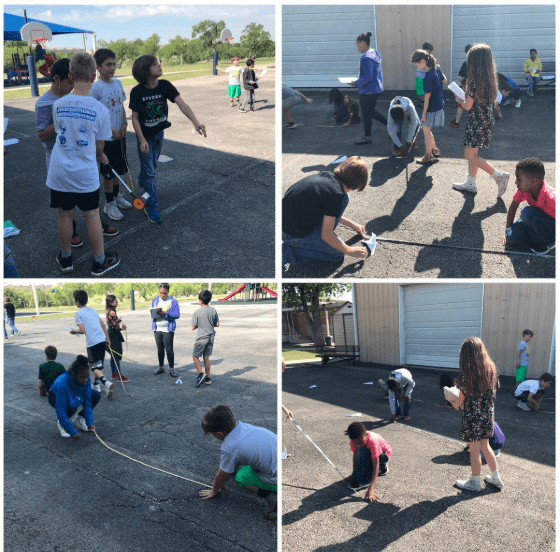You could say we made this lesson up “on the fly.” I was looking for something fun and interactive and found an idea from Science Penguin on teaching a lesson on the paper airplane. The focus of the lesson was geared towards different variables that could affect the distance flown by the planes.
Learning Taking Flight
Prior to building the planes, I accessed the students’ prior knowledge, and we discussed what variables could affect their airplane. We also talked about what forces affect flight. Students built their planes from two types of paper: notebook and copy paper. However, this lesson is very adaptable. You could definitely change it up and use different types of materials instead of just paper.
To help springboard their ideas, I sent out a link in our Google Classroom to show different styles of paper airplanes they could construct.
Budding Engineers
After all of the students had constructed their creations, we took them outside to test them. I demonstrated the process of throwing the airplane and then measuring with the measuring tape and Trumeter measuring wheel.
Once we discussed the process, I let them work together in groups of three. The groups were a great size to foster communication and collaboration, but I needed more measuring tapes and more Trumeters. Some groups had to wait patiently for the tools while others were working.
Once they took their measurements, they wrote down all of their data in their science journals. As some were finishing up, I briefly discussed with them about conversions because we were using centimeters, feet, and inches. You could definitely extend this lesson with more math conversion equations if you would like. You could also bring in different types of nonstandard measurement tools to further extend the learning.
Reflecting on the Lesson
We had some students whose planes flew really well and we had others that flew terribly. In the moment, we discussed briefly why they thought the flight was successful or not. We had some great conversations about how different variables impact the outcome. Maybe next time, I would consider having them write about their plane’s experience and then try to problem solve how they could adjust their plane to help them fly even better.
We then came back into the classroom and had a longer open discussion and reflection period about why their plane did what it did. We discussed the different variables at play in greater depth. We also talked about what they noticed during this experiment and how much force they used when throwing the plane. They also noticed that the people’s planes who flew the furthest were very aerodynamic. Some students tried different designs other than the basic paper airplane model and really enjoyed trying to be creative with their plane. Looking back, I wish we would have saved them and then flown them on a windy day to compare and contrast.
Overall, it was a lot of fun and the students had a great time flying their planes. In the process, they developed their collaboration, communication, creativity, and critical thinking skills. We built; we flew; we measured. #airplaneshenanigans
This is a guest blog by Chris Ramos. Chris currently teaches fifth grade at Fort Sam Houston Elementary in San Antonio, Texas. You can follow him on Twitter @RamosFSHE or email him at cramos@fshisd.net.

